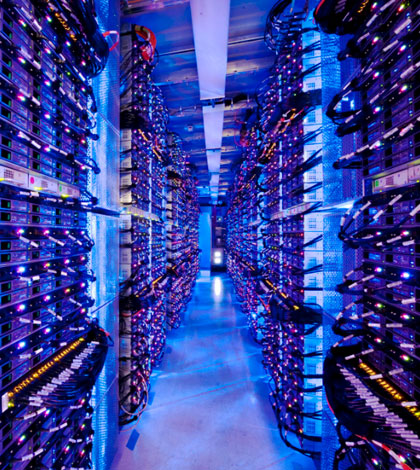TECH NEWS
Five reasons why a modern data centre strategy is needed now
As a new digital world emerges from the dual impact of the Nexus of Forces and the Internet of Things, the personality, structure and role of data centres will need to be changed or business agility and competitive strength will be compromised, according to Gartner, Inc.
April 15, 2015

As a new digital world emerges from the dual impact of the Nexus of Forces and the Internet of Things, the personality, structure and role of data centres will need to be changed or business agility and competitive strength will be compromised, according to Gartner, Inc.
“For over 40 years, data centres have pretty much been a staple of the IT ecosystem,” said Rakesh Kumar, managing vice president at Gartner. “Despite changes in technology for power and cooling, and changes in the design and build of these structures, their basic function and core requirements have, by and large, remained constant. These are centred on high levels of availability and redundancy, strong, well-documented processes to manage change, traditional vendor management and segmented organisational structures. This approach, however, is no longer appropriate for the digital world.”
Organisations need to develop a more appropriate and modern data centre strategy
Make the Data Centre Behave More Like a Factory and a Laboratory
By 2020, more than seven billion people and businesses, and close to 35 billion devices, will be connected to the internet. This will result in a significant increase in the speed and volume of data that needs to be handled by data centres. In this sense, data centres will need to behave like theoretical factories with production lines that can scale up to handle ever-increasing volumes of work.
They will also be expected to churn through huge volumes of data to connect applications and allow for better real-time analytics. Therefore, certain parts of the data centre need to behave like a laboratory, forensically analysing this vast ocean of data to provide insight and actions for the business.
Manage the Pressure on the Data Centre to Become Agile and Innovative
The disruption triggered by digital business is fluid and nonstop, with the potential for massive innovation driving significant changes in IT service delivery. In order to deal with these rapid changes, become agile and, at the same time, maintain process-driven integrity and safety of existing systems, many organisations have begun operating in two modes or speeds of IT. Gartner calls this “bimodal IT.”
As the core engine delivering IT services, the data centre will need to become far more agile and responsive than it has ever been and operate in a bimodal way. Without adapting the mentality and approach of data centres away from continuous stability to managed change and innovation, data centre managers will find it increasingly difficult to prove their value.
Manage Different Types of Risk
Digital business will not only see a huge number of devices connected, but will also see data centres as the focal point of these connections. Traditionally, data centres have focused on risk management, which is normally associated with downtime, system availability and application-centric breaches. Data centre strategies fit for the digital world must have a key focus on a broad approach to risk management. Another important risk for many digital business transactions is that no single entity will own availability and performance service levels for the complete end-to-end transaction. This will create a whole new set of service assurance challenges.
Make the Data Centre Part of a Broader Hybrid Topology
Traditionally, IT spending has been through IT departments with data centres delivering IT services. This is rapidly changing. Currently, 38 per cent of total IT spend is outside of IT, with a disproportionate amount in digital projects; by 2017, it will be more than 50 per cent. Lines of businesses will spend with cloud and third-party service providers if they feel their data centre is either too slow to respond or too closed to new technologies. As a result, infrastructure & operations leaders must ensure that their internal data centres are able to connect into a broader hybrid topology.
Embrace New Technologies in a Different Way
The digital world is bringing a host of new technologies that will need to be managed differently in data centres. At the edge, there will be mobile devices such as smartphones and tablets, which will need the operational control of data centres, such as software configurations, standardised operating environments and security patching.
At the same time, there will be changes in the more traditional data centre hardware of servers, storage and network equipment, forcing data centre managers to rethink their procurement, management and support strategies. Yet another change will be in vendor relationships. The digital world is reshaping the vendor landscape and the technologies and vendors that have traditionally been instrumental in strong data centre services are going through changes, meaning I&O leaders will need to reshape their strategy for providing IT services.
Additional information is provided in the Gartner report “Five Reasons Why You Need a Different Data Center Strategy for the Digital World.” The report provides rankings and market share for the top 10 vendors.
Data centre strategies will be further discussed at the Gartner IT Infrastructure & Operations Management Summit 2015, 1-2 June in Berlin.